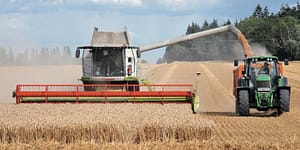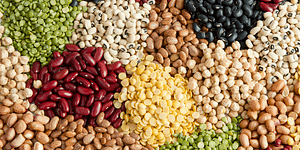The Evolution of Tools: Rock, Paper, Scissors

We’ve all played Rock, Paper, Scissors; whether it’s to decide who’s goes first, who’s doing the dishes, or simply a way to pass the time– we all know the rules. While it’s a child’s game on the surface level, Nick Kary gleans a deeper meaning to this game of tools.
The following excerpt is from Material by Nick Kary. It has been adapted for the web.
Used by kids to mimic gun or sword, used to hit balls to test prowess or raised whimsically as a spear, in play the stick is a symbol of power separated by a gossamer-thin veil from the darker side of adult behaviour. It is often associated with masculinity: the ‘boyness’ of boys, and how they ‘naturally’ gravitate to certain forms of play. Stick, bat, weapon and stone, ball, missile are two sequences that seem difficult to escape. Inanimate objects held in human hands become either toy or weapon. This is often used as a shorthand for human development, the idea that playground behaviour is being practised in preparation for the world outside the playground.
The premise is that the stick and stone were the first interface of our ancestors, the way that earliest Homo sapiens differentiated themselves from the rest of the animal world. So the story goes that inanimate objects became weapons with which to exert power over others. Humanity’s mastery of them has become increasingly refined so that these objects no longer look like the sticks and stones that were originally picked and lightly fashioned from the primeval forest floor. In only a few hundred years, they have become extraordinarily sophisticated weapons of power with great destructive potential.
Tools have a role within this overarching narrative, too, in the articulation of stick and stone, of spear and missile for hunting, driven by the hard edge of resilient materials.
We have all played rock paper scissors, I imagine. I was always so surprised that paper had the power over the rock that it did. There was something poetic about this, something that transcended so much of what was otherwise fundamental thinking. That a material so thin and delicate could overwhelm something so resilient, heavy and powerful as a rock never failed to bewilder and entrance me. The three protagonists in the drama are the hard and heavy, the soft and expansive, and the sharp. So scissors cut paper, which when uncut smothers rock and takes away its power.

Illustration by Lou Tonkin
It seems that they are in perfect order for the timescale of human evolution. The stone occurring in its raw form, lying cracked, worn and separated on the ground was picked and roughly fashioned with other rocks. It could be used to crudely pound or shear fibre from wood, bark, grasses or skins. These fibres – woven, pounded, saturated or heated – were used to fashion clothing or baskets or parchment-like sheets. The hard helped create the soft, and the soft helped contain a life, to protect and keep warm or to collect food and radically multiply the holding potential of the hands.
The scissors of the game are clearly a very late development of the tool, a mechanical adaptation of the steel blade that has been around for only a few thousand years. Yet its mechanistic imperative, or at least its antecedent – the knife edge, arrow head, sharp point hafted to a stick – has driven much of our thinking.
There is an essay by Ursula K. Le Guin called ‘The Carrier Bag Theory of Fiction’. Her theories tie in with my own musings, and help create a more rounded vision of tool development and use, and of the imperatives that may have driven our relationships with making. In it she imagines the seductiveness of the stick and stone narrative, of the hero prototypes based around meat eating and hunting practices. She seeks to challenge how prevailing narratives end up dictating regular patterns of consciousness and of fictional and factual storytelling. Working on established research that between 65 and 80 percent of our ancestors’ diet was vegetable-based, she imagines the bag as great an imperative as the spear, or greater. That the hunt for vegetable sustenance and the development of humanity were contained within the container that contained the fruits of the day’s labour.
Her main point, though, is how the acceptance of a particular narrative can then affect all the stories we tell. By telling stories based on the assumption that it was the spear and not the carrier bag by which human development was articulated, we set in motion later stories coming from an aggression-centric, male-centric, meat-centric perspective. How different would our narratives be had they been based on the idea of the bag or basket, of holding, of containment and of the different relationships required with nature that arose. As far as I know there are no cave paintings elevating the basket or woven cloth, but there is this idea that woven plant fibre has a strength, resilience and contribution far greater than the disappearance of it from the historical archive would allow us to believe. There is relatively little archaeological evidence of woven plant fibre in comparison with the extensive catalogue of stone and metal weapons and tools.
Recommended Reads
Recent Articles
Oxeye daisies are one of the most important plants for pollinators including beetles, ants, and moths that use oxeye daisies as a source of pollen and nectar. Instead of thinking about removing a plant like oxeye daisy, consider how you can improve the fertility and diversity of habitat resources in your home landscape, garden, or…
Read MoreThis long-lived perennial legume is used for forage and erosion control. Kudzu is edible with many medicinal uses and other applications. Pollinators of all kinds love its prodigious lavender blooms!
Read MoreMove aside, maple! We have two new syrups to add to the table. Read on for insights on tapping, selling, and eating syrup from walnut & birch trees.
Read MoreWhy is modern wheat making us sick? That’s the question posed by author Eli Rogosa in Restoring Heritage Grains. Wheat is the most widely grown crop on our planet, yet industrial breeders have transformed this ancient staff of life into a commodity of yield and profit—witness the increase in gluten intolerance and ‘wheat belly’. Modern…
Read MoreDid you ever wonder how leeks, kale, asparagus, beans, squash, and corn have ended up on our plates? Well, so did Adam Alexander, otherwise known as The Seed Detective. The following is an excerpt from the The Seed Detective by Adam Alexander. It has been adapted for the web. My Seed-Detective Mission Crammed into two…
Read More







